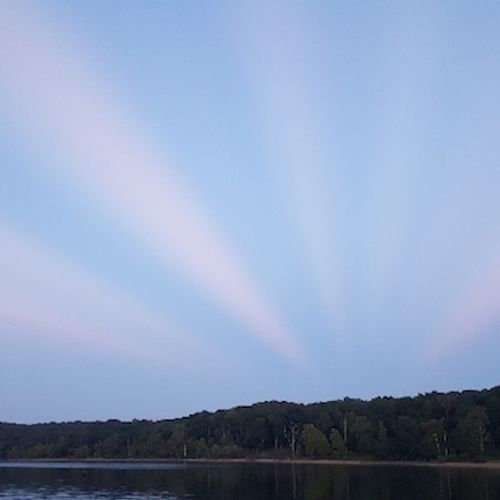
| Added | Fri, 14/08/2020 |
| Источники | |
| Дата публикации | Fri, 14/08/2020
|
| Версии |
We are more than sure that you have seen this magical moment more than once when the sun's rays make their way through the clouds and create the illusion of thin glowing threads descending from the sky to the ground.
This optical phenomenon is called the twilight rays and occurs when sunlight makes its way through cloud clearing. It is created by a game of light and shadow. If there are tiny droplets of water or dust in the atmosphere, a white haze appears in the air. In clear weather it is almost invisible. But when there are clouds in the sky, everything is magically transformed. Parts of the sky in the shadow of the clouds are illuminated weaker and appear to us dark stripes. Illuminated areas, on the other hand, seem to be bright stripes of light. Because of the clear separation of shaded space and space, which is illuminated by the sun, we see rays diverging from the luminaries.
Sunlight spreads in straight lines. But the projections of these lines on the spherical sky - arced. Therefore, the twilight rays from the incoming or rising sun converge again, but on the other side of the sky. When they meet at a point that is 180 degrees from the sun, they are called anti-twilight (or anti-mind, which is more common) rays.
The most spectacular twilight and anti-twilight rays look at dawn and sunset, when the shadows from the clouds lie at the horizon, and the light of the sun is still (or already) not dazzling bright. Wet and warm weather is a good condition for the appearance of such rays, when condensation appears in the atmosphere. They can also be observed after squalls and strong winds, when dust rises into the air.
Новости со схожими версиями
Log in or register to post comments







